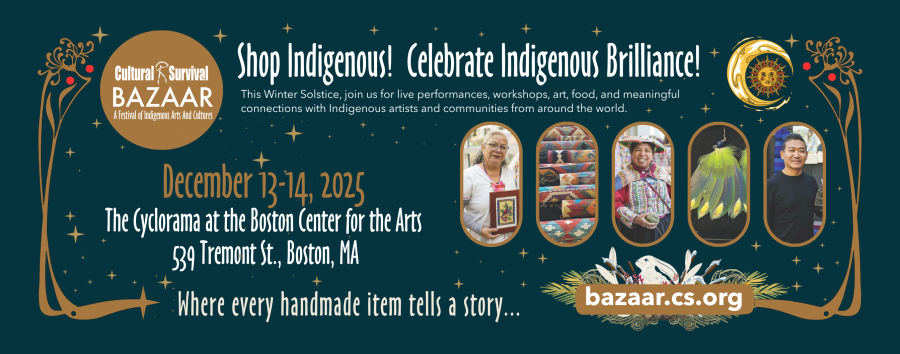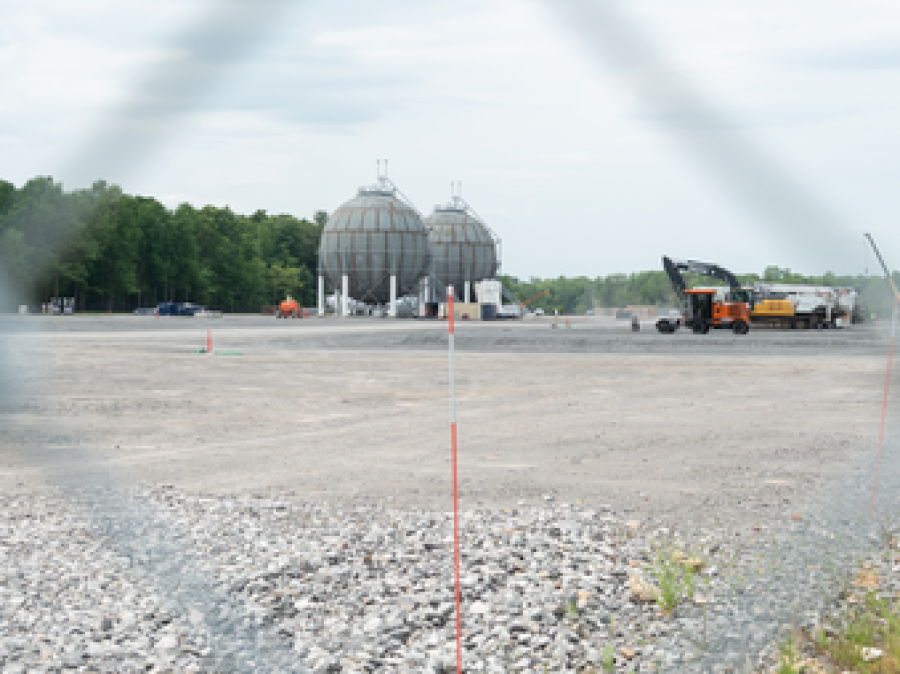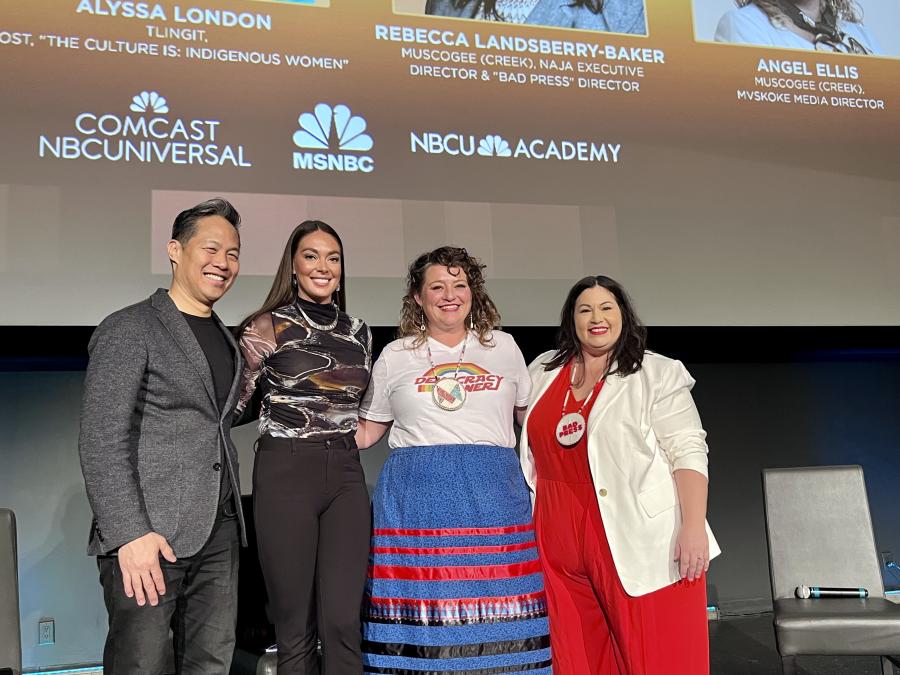
“Developing Stories: Native Photographers in the Field,” featuring essays and images of Native American photographers, is on exhibit at the New York City branch of the National Museum of the American Indian through March 12, 2023, and features the work of photojournalists Donovan Quintero (Navajo), Tailyr Irvine (Salish and Kootenai), and Russel Albert Daniels (Dine’ descent and Ho-Chunk descent). In addition to the online and in-person exhibition, on February 4 the museum sponsored “Fresh Focus on Native American Photography,” featuring the aforementioned photographers as well as art photographers Tom Jones (Ho-Chunk) and Nia MacKnight (Hunkpapa Lakota and Anishinabe), whose works are also on display at the museum.
“Developing Stories” is an excellent example of how Native American photographers/creatives/writers working in partnership with an institution like the National Museum of the American Indian that foregrounds Indigenous cultures can reach Native and non-Native audiences in a way that touches people more intimately than similar exhibitions in more Euro-American centered museums and galleries. In this exhibition, Irvine, Daniels, and Quintero used imagery, text, and oral narrative in a complement to the museum’s missions to “strive toward equity and social justice for the Native Peoples of the Western Hemisphere through education, inspiration, and empowerment.” I spoke with Cecile Ganteaume, Curator of “Developing Stories,” and Daniels prior to the symposium.

"Michael Irvine Hunts on the Flathead Indian Reservation." Photo by Tailyr Irvine.
“Reservation Mathematics: Navigating Love in Native America” is the title of Irvine’s photo essay. Since her mother and father are from different tribes, Irvine knew that she would have to navigate blood quantum (a system that uses fractions of Native American ancestry to define Native American status) when she began dating. For this project, she interviewed and photographed members of the Confederated Salish and Kootenai Tribes, including her own siblings, while they were expecting children, and related how blood quantum requirements would impact their children’s tribal enrollment. All together, seven family stories give a glimpse into how blood quantum requirements put pressure on Native Americans’ lives. In her artist’s statement, Irvine says, “My goal is to document the world around me. While I naturally gravitate toward topics involving my community, pursuing Indigenous narratives is not a conscious decision. To me, these are not Native stories, they are stories about my life. "

"Tiana Antoine and Nathan Drennan." Photo by Tailyr Irvine.
Photographs of the couple Tiana Antoine and Nathan Drennan embracing each other and a photo of the tribal identification card of their child, Prairie Cocowee Antoine, highlight the social and numeric complexities of enrollment. Antoine is 113/128, and Drennan is 1/4 blood quantum. Drennan chose to only date women from his Tribe so that his child could be tribally enrolled for cultural reasons.
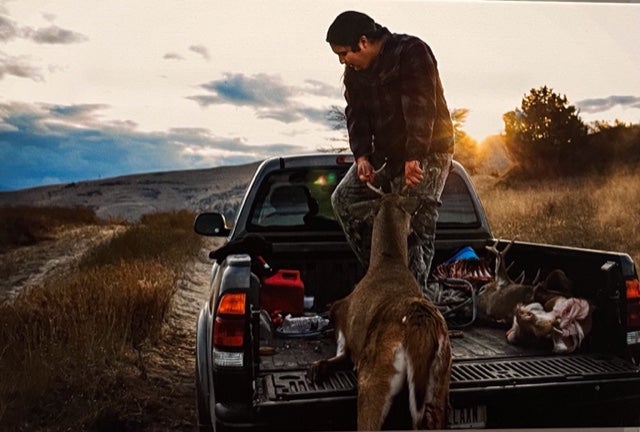
"Michael Irvine Hunts on the Flathead Indian Reservation." Photo by Tailyr Irvine.
A photograph of Ivrine’s brother, Michael, walking alone with his hunting rifle, reflects his inability to bring his daughter with him when he hunts on tribal land because his daughter is not an enrolled member. As a child, his daughter Nizho’ni’ can accompany him, but only until the age of 18. In addition to her responsibilities as a photojournalist, Irvine is a cofounder of Indigenous Photograph, which she describes as “a database dedicated to facilitate the media in hiring Indigenous photographers to tell their stories of their communities and to reflect on how they tell these stories.”
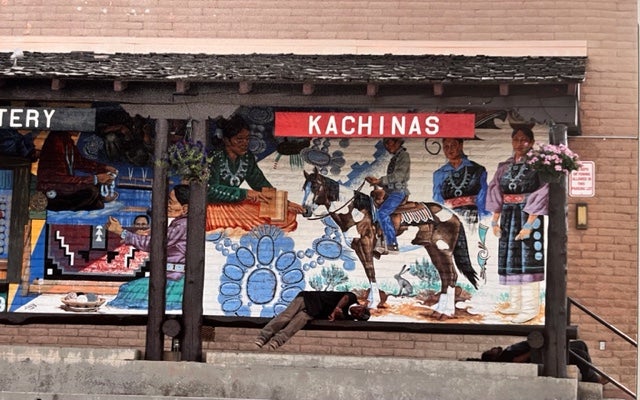
"Unsheltered Relatives Sleep Outside." Gallup, New Mexico, July 7, 2020. Photo by Donovan Quintero.
Donovan Quintero is the type of photojournalist who puts himself right in the center of the action, no matter how dangerous or life threatening, especially if it is affecting his Native community. Working for the Navajo Times, Quintero investigated, reported, and photographed events and scenes that captured the COVID-19 pandemic’s impact on the daily lives of the Dine’.
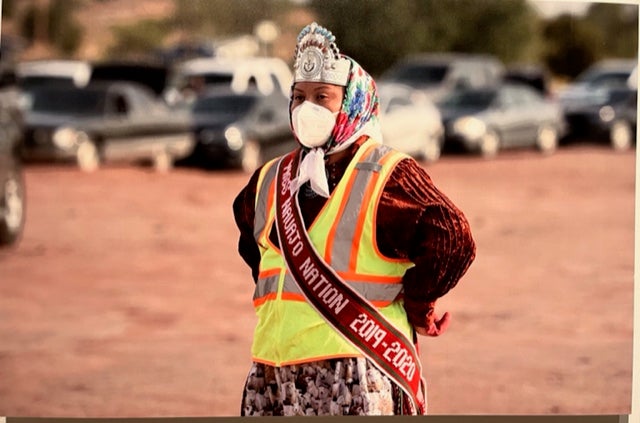
"Miss Navajo Nation Distributing Food." Ganado, Arizona, Navajo Nation, October 2, 2020. Photo by Donovan Quintero.
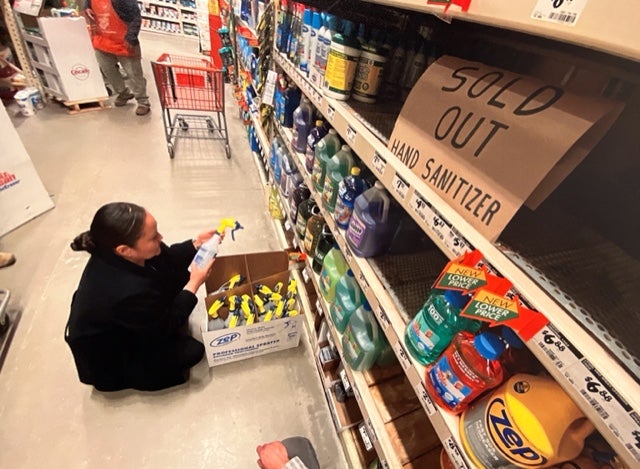
“The Race for Cleaning Supplies.” Gallup, NM, March 11, 2020. Photo by Donovan Quintero.
The Navajo Nation’s 27,000 square miles are located across Arizona, New Mexico, and Utah with housing often long distances from essential places like public schools, grocery and drug stores, post offices, and most of all, medical clinics and hospitals. Early in the pandemic, the Navajo Nation issued public health orders concerning masking, social distancing, sanitation, and isolation. Qunitero’s photograph, ”Public Health Message,” Chinless, AZ, July 10, 2020, is about washing hands. “Unsheltered Relatives Sleep Outside,” Gallup, NM, July 7, 2020, portrays homeless Navajos sleeping on benches and steps outside of the Perry Null trading Company. During a Covid outbreak at the Four Corners Detox Recovery Center in April 2020, unsheltered relatives (the Navajo name for the unhoused) were among the 100 Dine’ exposed to the virus. “The Race for Cleaning Supplies” features Gallup Police Captain Erin Toadlena-Pablo shopping below a sold out hand sanitizer sign.

“Black Lives Matter Protest,” Albuquerque, NM, May 31, 2020. Photo by Donovan Quintero.
As a photojournalist, Quintero also covers social justice movements. “Black Lives Matter Protest” shows Ryla Becenti from Sawmill, AZ in the Navajo Nation carrying her skateboard during a rally protesting the death of George Floyd and chanting, “Say his name” and “No justice, no peace,” along with other Dine’ protestors.
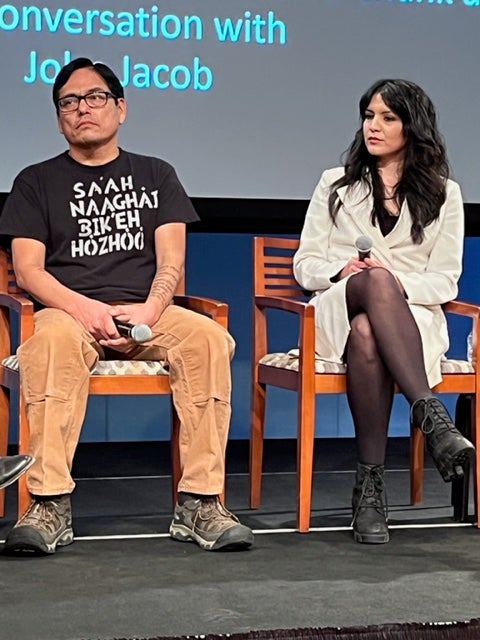
Donovan Quintero and Tailyr Irvine. Photo by Phoebe Farris.
During the symposium, museum visitors took notice of Quintero’s t-shirt with a Navajo statement in large letters: SAAH, NAAGHAI, BIKEH, HUZHOO (loosely translated as “An individual who is by himself, at peace with the universe and so it shall be with all”). The statement seems to accurately reflect Quintero’s essence as a photographer and as a human being.
Before Quintero photographs anyone he speaks to them in his Native language; that is how he was raised to introduce himself. During a Q&A, Quintero said, “I wanted to focus on the traditional aspect of who we are as a people, the Dine'.” He says he still uses a viewfinder camera partly because “it is a protective barrier. I can get close to people and they can get to know me,” later adding, “I photograph the beautiful people who are willing to share their tragedies and their triumphs. I am there to be their catalyst. That’s all I am. I am just a vessel.”
--Phoebe Mills Farris, Ph.D. (Powhatan-Pamunkey) is a Purdue University Professor Emerita, photographer, and freelance art critic.
Read: Interview with Cecile Ganteaume, Curator of NMAI’s “Developing Stories”
Read: An Interview with Photojournalist Russel Albert Daniels
